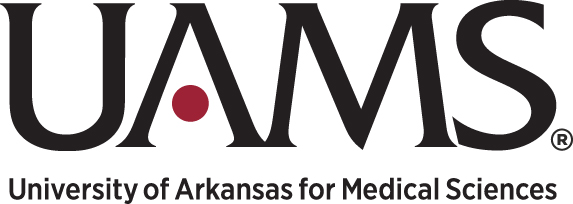Newswise — Multiple myeloma researchers at the University of Arkansas for Medical Sciences (UAMS) recently discovered that widespread activity of a specific class of genes can identify aggressive, or high-risk, cases of the disease.
Research led by John D. Shaughnessy Jr., Ph.D., director of the Donna D. and Donald M. Lambert Laboratory for Myeloma Genetics at the UAMS Myeloma Institute for Research and Therapy, pointed to the high level of molecules known as microRNAs in patients with high-risk multiple myeloma.
The discovery could lead to more sensitive tools for diagnosing and treating those with high-risk multiple myeloma, a cancer of plasma cells, a type of white blood cell produced in the bone marrow.
The research was detailed in the article “High-risk myeloma is associated with global elevation of miRNAs and overexpression of EIF2C2/AGO2,” published online April 13 in the journal Proceedings of the National Academy of Sciences. The article can be found at www.pnas.org/content/early/recent.
“The abnormal over expression of microRNAs in high-risk multiple myeloma adds to our understanding of disease biology and the extreme variability in patient outcomes,” said Shaughnessy, a professor of medicine and biostatistics in the UAMS College of Medicine. “We hope this will give us a more precise definition of what multiple myeloma is as a disease and improve our ability to treat it.”
MicroRNAs are small ribonucleic acids (RNA) that contain genetic information transcribed from genes contained in our DNA. It has been shown that deregulation of microRNAs contributes to the initiation or growth of cancer.Researchers led by Shaughnessy at the Myeloma Institute hypothesized 10 years ago that gene expression profiling of multiple myeloma cells at time of diagnosis might be able to predict a patient’s ultimate response to therapy.
After 10 years of follow-up on more than 1,000 patients receiving uniform treatment, the researchers were able to show that patterns in just 70 of the 25,000 genes tested could predict less aggressive, or low-risk, and more aggressive, or high-risk, forms of the disease. Approximately 20 percent of newly diagnosed cases are thus identified as high-risk.
“In our latest research, we found uniformly high levels of microRNAs in high-risk myeloma patients. This finding reveals possible clues to this difficult-to-treat form of the disease,” he said.
Other cancers have been linked to altered microRNA levels, Shaughnessy said, but the microRNA levels are more variable, with some being high and some being low in different diseases.
Researchers will now examine whether the high levels of microRNAs are a factor in causing high-risk multiple myeloma or whether the high-risk multiple myeloma triggers the high levels of microRNAs.
The UAMS researchers also examined the relationship between microRNAs and the gene called EIF2C2 or Argonaute 2. This gene controls the maturation of all microRNAs, Shaughnessy said, and could hold the key to new multiple myeloma treatment.
Shaughnessy’s group had previously shown that Argonaute 2 is one of 51 overexpressed genes in high-risk multiple myeloma. The data suggest that elevated expression of Argonaute 2 could be an underlying cause of the widespread overexpression of microRNAs in high-risk multiple myeloma, he said.
“In addition, if the behavior of the microRNAs are driving high-risk disease, which, in turn, is driven by elevated expression of Argonaute 2, then controlling Argonaute 2 expression might be a new treatment strategy for high-risk multiple myeloma,” Shaughnessy said.
The researchers reported in the PNAS paper that silencing Argonaute 2 in myeloma cell lines causes cell death. Future research will be aimed at using this information to develop more effective treatments based on more in-depth understanding of the disease.
Lead author of the journal article is Yiming Zhou, Ph.D., a postdoctoral fellow in the Shaughnessy Laboratory. Joining Zhou, Shaughnessy and Myeloma Institute director Bart Barlogie, M.D., Ph.D., as authors were Lijuan Chen, postdoctoral fellow; Owen Stephens, research associate; Xiaosong Wu, research associate; David R. Williams, research associate; Marie-Astrid Cartron, research associate; Frits van Rhee, M.D., Ph.D., professor of medicine and director of clinical research at the Myeloma Institute; Bijay Nair, M.D., assistant professor of medicine; Sarah Waheed, M.D., assistant professor of medicine; Mauricio Pineda-Roman, M.D., assistant professor of medicine; Yazan Alsayed, M.D., assistant professor of medicine; and Elias Anaissie, M.D., professor of medicine and director of supportive care at the Myeloma Institute.
The Myeloma Institute for Research and Therapy was the first center in the world devoted exclusively to research and clinical care of multiple myeloma and related disorders. Founded in 1989 by Barlogie, the UAMS Myeloma Institute has seen more than 9,000 patients from every state in the United States and more than 50 foreign countries.
UAMS is the state’s only comprehensive academic health center, with colleges of Medicine, Nursing, Pharmacy, Health Related Professions and Public Health; a graduate school; a 540,000-square-foot hospital; six centers of excellence and a statewide network of regional centers. UAMS has 2,775 students and 748 medical residents. Its centers of excellence include the Winthrop P. Rockefeller Cancer Institute, the Jackson T. Stephens Spine & Neurosciences Institute, the Myeloma Institute for Research and Therapy, the Harvey & Bernice Jones Eye Institute, the Psychiatric Research Institute and the Donald W. Reynolds Institute on Aging. It is the state’s largest public employer with more than 10,000 employees, including nearly 1,150 physicians who provide medical care to patients at UAMS, Arkansas Children’s Hospital, the VA Medical Center and UAMS’ Area Health Education Centers throughout the state. Visit www.uams.edu or www.uamshealth.com.
MEDIA CONTACT
Register for reporter access to contact detailsCITATIONS
Proceedings of the National Academy of Sciences (PNAS) (online, 13-Apr-2010)
